Excursions around outskirts of Kiev
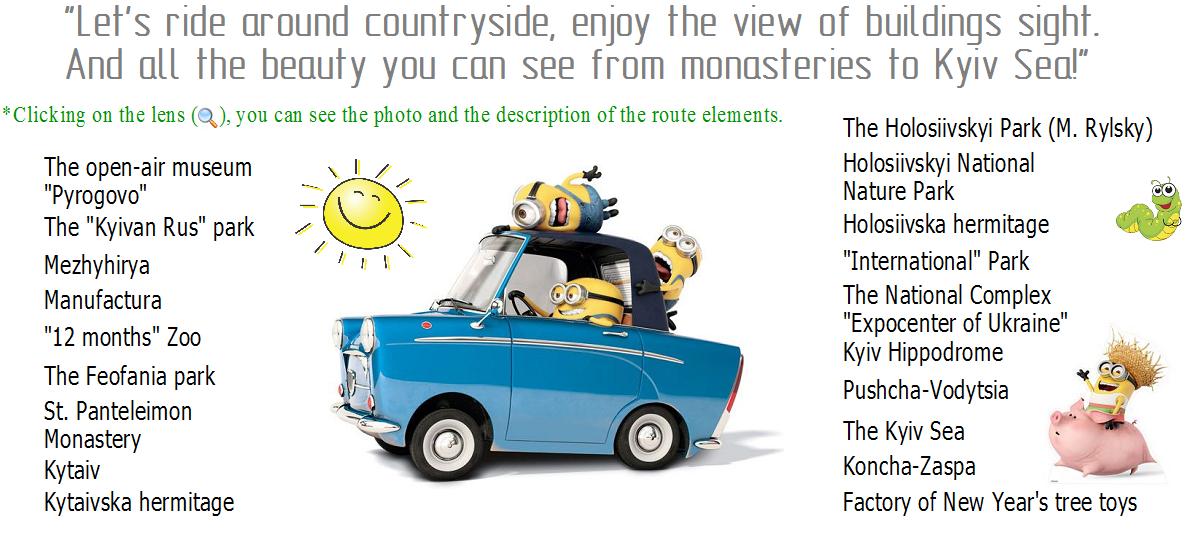
We invite you to tour around the outskirts of Kiev. We offer a choice of Kitaevo, Golosiievo, Feofania park, and NK Expocenter of Ukraine. We also conduct excursions to the suburbs – Mezhyhiria, Pushcha-Voditsa, Kyiv reservoir and other places near Kyiv. In addition, we organize one-day tours around suburban attractions – Mezhyhiria, Pyrohovo, and Kyiv Rus Park. Read more about objects on this page by clicking on pictures with section names.
ATTRACTIONS NEAR KYIV
Map of Kiev and suburbs
There are a lot of landmarks on the outskirts of Kiev. Some of them have ancient history: Kytaevo – in X century a fortress was built there, cave cells, remains of fortifications and cemetery have survived to this day; Holosiivo – first mentioned in 1541, then the territory belonged to Pechersk monastery.
Feofania – first mentioned in the Chronicles as Lazarevschina in 1471, later belonged to St. Michael’s Golden-Domed Monastery, where cells, the metropolitan house, the refectory and the houses for pilgrims were built; Pushcha-Voditsa – known since the days of Kyivan Rus, where the royal hunting took place, the territory is rich in forests, lakes, rivers, which favored the development of sanatorium resorts; Koncha – Zaspa is famous for its great location, beautiful nature with access to the Dnipro River, first mentioned in the XVI, later belonged to Vydubetsky and Vvedensky monasteries.
Some of the landmarks on the outskirts of Kiev are of a cultural and entertaining nature: Pyrogovo museum is the home to the biggest collection of constructions of all ethnic regions of Ukraine, also one can learn more about national customs and traditions; the “Kyivan Rus” park is devoted to the reconstruction of the detinets (the city of Volodymir) in its true size of the 11th-13th centuries, knight tournaments are held, ancient Slavic holidays are celebrated; Mezhyhirye – had an ancient monastery of the XIV century on its territory, the remains of which were demolished in 1935 for construction of the government suburban residence, now this place is called a symbol of corruption because of the extraordinary sumptuousness of buildings and the natural landscape.
One can visit the “12 months” zoo and spend time with the animals at arm’s length and even feed or pet them. All shopping lovers can visit the town “Manufactura” where a lot of famous brands are presented, offering a permanent discount of 70%. Admirers of exhibitions and festivals can visit the National Complex “Expocenter of Ukraine”. Who wants to warm up can visit the Kiev Hippodrome and ride horses, water sports lovers can go to the Kyiv Sea, where one can do wind and kite surfing. Aesthetics lovers can go to the oldest factory of Christmas-tree toys, where a rich collection of toys from around the world is collected.


























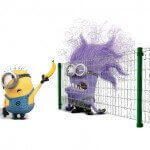
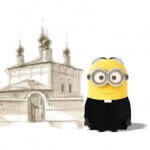


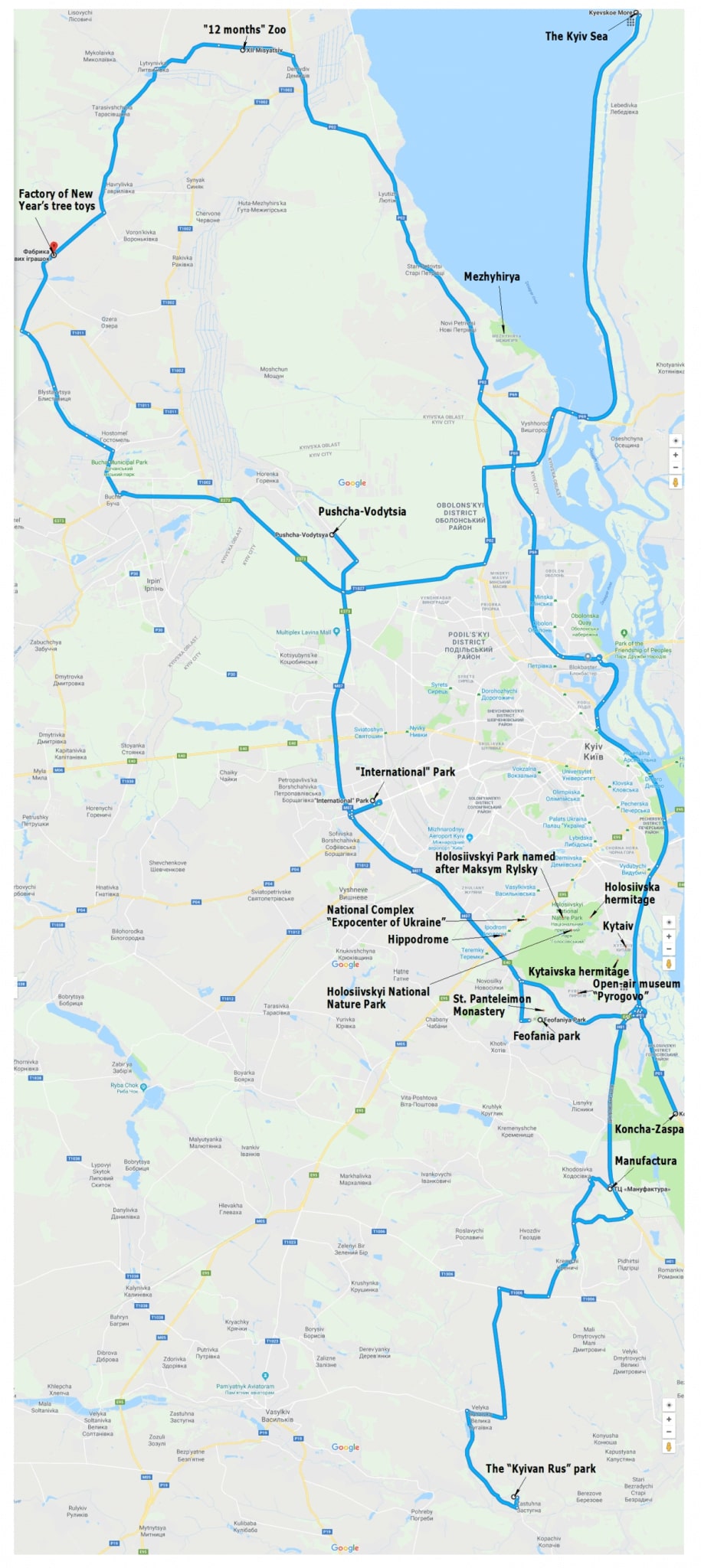
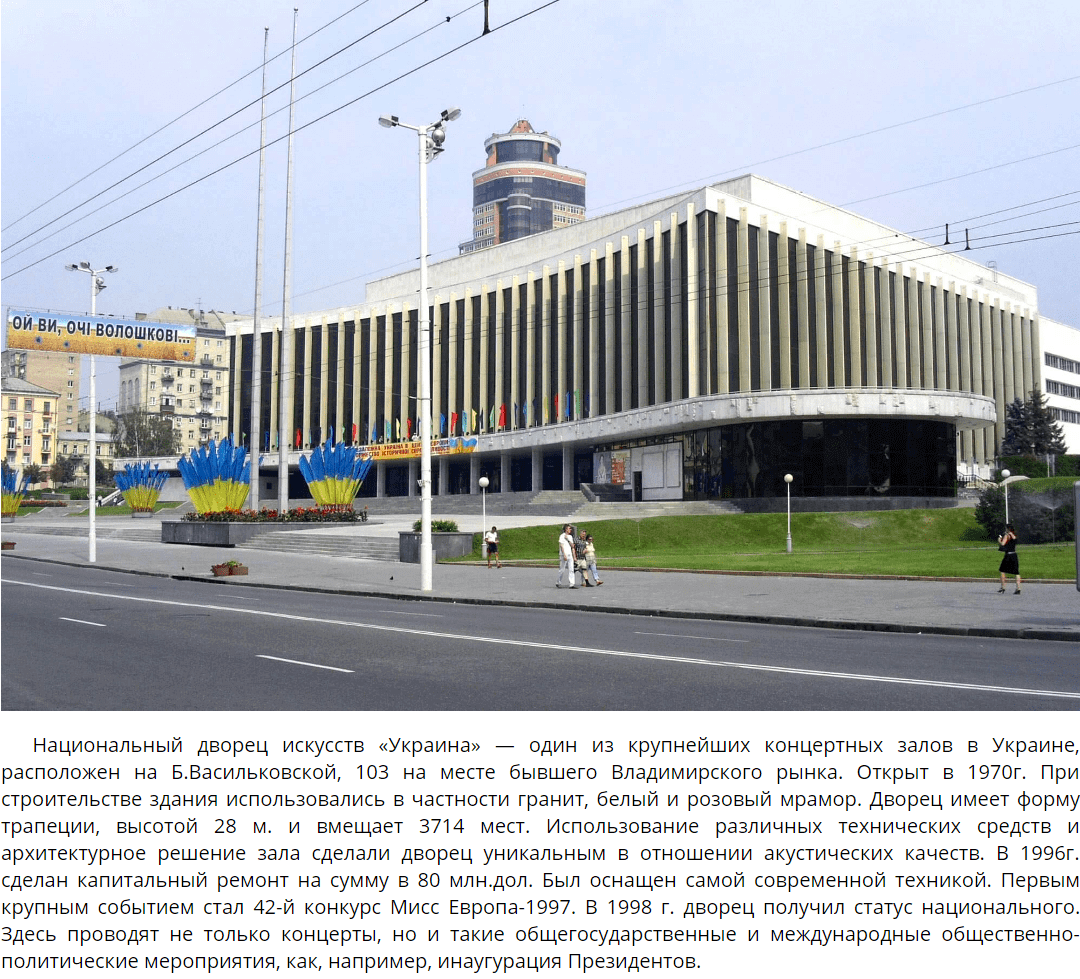
 Factory of New Year’s tree toys – is the oldest factory in the village of Klavdievo-Tarasovo, founded in 1948 on the basis of a manufactory for glass processing in medicine. It is one of three enterprises in the USSR for the production of New Year’s toys. Most technical processes are still being carried out manually.
Factory of New Year’s tree toys – is the oldest factory in the village of Klavdievo-Tarasovo, founded in 1948 on the basis of a manufactory for glass processing in medicine. It is one of three enterprises in the USSR for the production of New Year’s toys. Most technical processes are still being carried out manually. Koncha-Zaspa is a dacha settlement near the Dnipro on the outskirts of Kyiv. The area is mentioned since the XVI century and consists of a picturesque pine forest with access to the Dnipro embankment. The name comes from the local dialects “zaspa (shallow lake, sand-sprinkled, or riverine sleeve) and” koncha “(overgrown with reeds or marshy vegetation, or a semi-dry and sand-strewn former river bed). Presumably occurs from the Dnipro branches located here.
Koncha-Zaspa is a dacha settlement near the Dnipro on the outskirts of Kyiv. The area is mentioned since the XVI century and consists of a picturesque pine forest with access to the Dnipro embankment. The name comes from the local dialects “zaspa (shallow lake, sand-sprinkled, or riverine sleeve) and” koncha “(overgrown with reeds or marshy vegetation, or a semi-dry and sand-strewn former river bed). Presumably occurs from the Dnipro branches located here. The Kyiv Sea is a reservoir with an area of 922 km² on the Dnipro River to the north of Kyiv, created in 1964-1966 for the construction of a hydroelectric power station in the Vyshgorodsky district. At the end of XIX century at the place of the sea there was a usual bottomland. For the construction of the Kiev Sea, it had to drown 52 villages.
The Kyiv Sea is a reservoir with an area of 922 km² on the Dnipro River to the north of Kyiv, created in 1964-1966 for the construction of a hydroelectric power station in the Vyshgorodsky district. At the end of XIX century at the place of the sea there was a usual bottomland. For the construction of the Kiev Sea, it had to drown 52 villages. Pushcha-Vodytsia is a historical place. Since 2001 is a part of the Obolonsky district of Kyiv. The name takes from located here the Vodytsia River and a dense forest (“Pushcha”). Since the XI century the area was used by princes for hunting. In 1724 here was created a forestry. And from the end of the XIX century Pushcha-Vodytsia became a dacha settlement, where the city-dwellers drove in the vacation season. Pine forest in 30 thousand hectares and the rivers created good conditions for health improvement in this area, which was the reason for the appearance of sanatoria and rest homes here.
Pushcha-Vodytsia is a historical place. Since 2001 is a part of the Obolonsky district of Kyiv. The name takes from located here the Vodytsia River and a dense forest (“Pushcha”). Since the XI century the area was used by princes for hunting. In 1724 here was created a forestry. And from the end of the XIX century Pushcha-Vodytsia became a dacha settlement, where the city-dwellers drove in the vacation season. Pine forest in 30 thousand hectares and the rivers created good conditions for health improvement in this area, which was the reason for the appearance of sanatoria and rest homes here.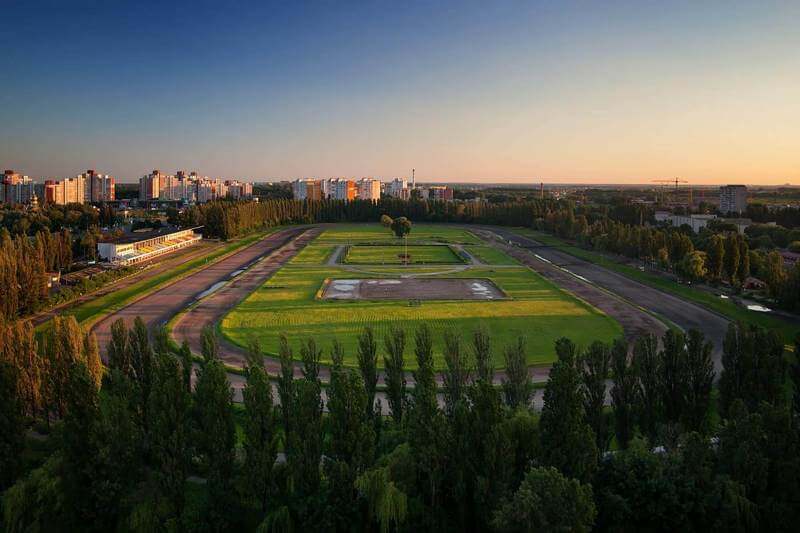 Kyiv Hippodrome – was built by the end of the 1960s. The first competitions took place in September 1966. In the 1970s near the hippodrome began to build an ice stadium and the residential community of Teremky. The modern hippodrome is a complex of buildings, which is located on the area of 45 hectares. During the period of work the Kyiv Hippodrome were set 351 records,35 of which are all-Union and 1 absolute. The hippodrome has a capacity up to 400 horses a year, 3 tracks, 10 stables, a competitive field. On this arena man teaches riding, puts to the test trotters, holds competitions, and also gives riding lessons.
Kyiv Hippodrome – was built by the end of the 1960s. The first competitions took place in September 1966. In the 1970s near the hippodrome began to build an ice stadium and the residential community of Teremky. The modern hippodrome is a complex of buildings, which is located on the area of 45 hectares. During the period of work the Kyiv Hippodrome were set 351 records,35 of which are all-Union and 1 absolute. The hippodrome has a capacity up to 400 horses a year, 3 tracks, 10 stables, a competitive field. On this arena man teaches riding, puts to the test trotters, holds competitions, and also gives riding lessons.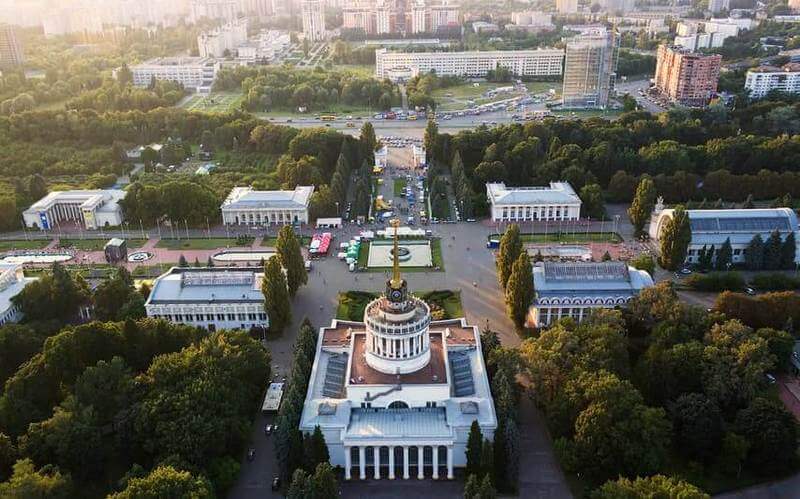 The National Complex “Expocenter of Ukraine” is an international complex specialized in demonstrating the achievements of Ukraine in the field of industry and science. It was opened since 1958 as the Exhibition of Achievements of the National Economy, to this day called local residents – VDNH. Construction of VDNH began in 1952 and was built at the place of a small suburban farm (khutor) Red Inn. At one time, the exhibition was visited by such famous personalities as the Vietnamese leader Ho Chi Minh, the President of France De Gaulle, UN Secretary-General U Thant, the British Prime Minister Margaret Thatcher and others.
The National Complex “Expocenter of Ukraine” is an international complex specialized in demonstrating the achievements of Ukraine in the field of industry and science. It was opened since 1958 as the Exhibition of Achievements of the National Economy, to this day called local residents – VDNH. Construction of VDNH began in 1952 and was built at the place of a small suburban farm (khutor) Red Inn. At one time, the exhibition was visited by such famous personalities as the Vietnamese leader Ho Chi Minh, the President of France De Gaulle, UN Secretary-General U Thant, the British Prime Minister Margaret Thatcher and others.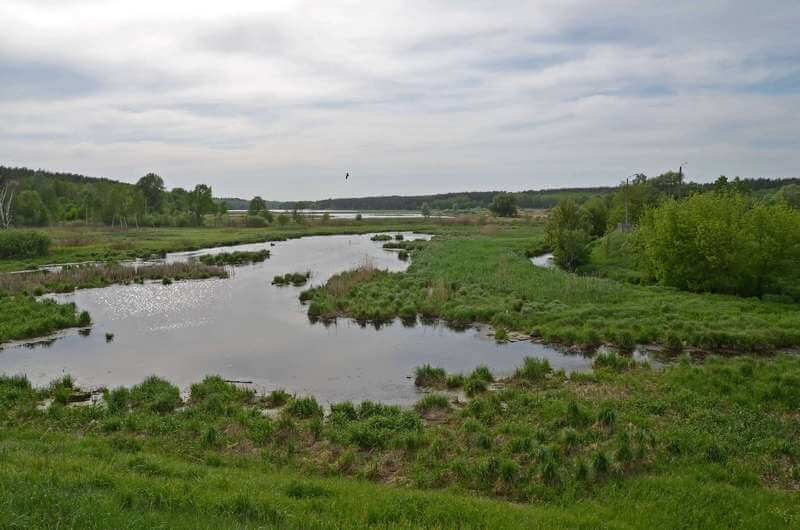 “International” Park is a monument of the landscape art of national importance, which is located in the Svyatoshynsky district of the capital, with an area of 240 hectares. The forest park is a natural massif with a predominance of pines aged 150-180 years. Also there are oaks up to 120 years old. In the forest park grow about 60 species of trees and bushes. Svyatoshyno is a historical place (first mentioned in 1619), from the end of the XIX century it was a dacha settlement on the outskirts of Kyiv, named after the legend in honour of Chernigiv prince Svyatoslav.
“International” Park is a monument of the landscape art of national importance, which is located in the Svyatoshynsky district of the capital, with an area of 240 hectares. The forest park is a natural massif with a predominance of pines aged 150-180 years. Also there are oaks up to 120 years old. In the forest park grow about 60 species of trees and bushes. Svyatoshyno is a historical place (first mentioned in 1619), from the end of the XIX century it was a dacha settlement on the outskirts of Kyiv, named after the legend in honour of Chernigiv prince Svyatoslav.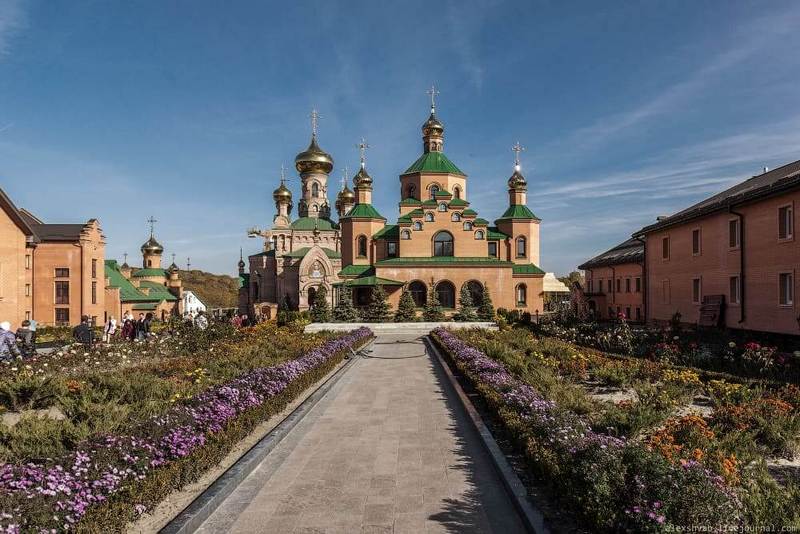 Holosiivska hermitage – is Holy Protection Monastery, hermitage of the Kyiv-Pechersk Lavra located in the Holosiivskyi forest. Having built here in the late XVII century The temple of John Sochavskyi, Petro Mogyla founded the suburban hermitage of the Kyiv-Pechersk Lavra, later called Holosiivskaya hermitage.
Holosiivska hermitage – is Holy Protection Monastery, hermitage of the Kyiv-Pechersk Lavra located in the Holosiivskyi forest. Having built here in the late XVII century The temple of John Sochavskyi, Petro Mogyla founded the suburban hermitage of the Kyiv-Pechersk Lavra, later called Holosiivskaya hermitage. The Holosiivskyi National Nature Park was founded in 2007 with an area of more than 4.5 thousand hectares and it is a protected area. The area itself is historical and called Holosiivo. It is mentioned in 1541 as “Holosiivo”, in 1617 – the Holosiivskyi khutor was mentioned in the description of the boundaries of the landed estates of the Kyiv-Pechersk Lavra. Presumably the name “Holosiivo” came from the fact that the forest was planted in a bare place (“bare seed”).
The Holosiivskyi National Nature Park was founded in 2007 with an area of more than 4.5 thousand hectares and it is a protected area. The area itself is historical and called Holosiivo. It is mentioned in 1541 as “Holosiivo”, in 1617 – the Holosiivskyi khutor was mentioned in the description of the boundaries of the landed estates of the Kyiv-Pechersk Lavra. Presumably the name “Holosiivo” came from the fact that the forest was planted in a bare place (“bare seed”). The Holosiivskyi Park named after Maksym Rylsky – was founded in 1957, located in the part of the natural forest of Holosiivsky district. From 1964 the park takes the name of the Ukrainian poet Maxym Rylsky, who lived in 1951-1964 next to the park.
The Holosiivskyi Park named after Maksym Rylsky – was founded in 1957, located in the part of the natural forest of Holosiivsky district. From 1964 the park takes the name of the Ukrainian poet Maxym Rylsky, who lived in 1951-1964 next to the park.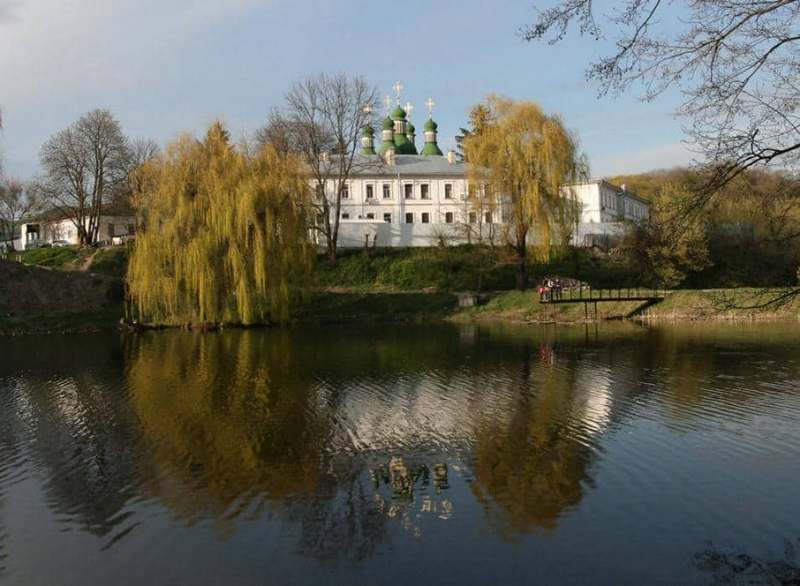 Kytaivska hermitage is an Orthodox monastery in Kytaiv, as known as hermitage, which means an Orthodox monastic settlement remote from the main monastery. It was founded in 1716, when the Kyiv-Pechersk Lavra decided to build a separate hermitage. At the beginning of the XVIII century Kytaiv has already been a popular pilgrimage place. The hermitage was known for its gardens, vineyard. In 1930, the hermitage was winded out.
Kytaivska hermitage is an Orthodox monastery in Kytaiv, as known as hermitage, which means an Orthodox monastic settlement remote from the main monastery. It was founded in 1716, when the Kyiv-Pechersk Lavra decided to build a separate hermitage. At the beginning of the XVIII century Kytaiv has already been a popular pilgrimage place. The hermitage was known for its gardens, vineyard. In 1930, the hermitage was winded out.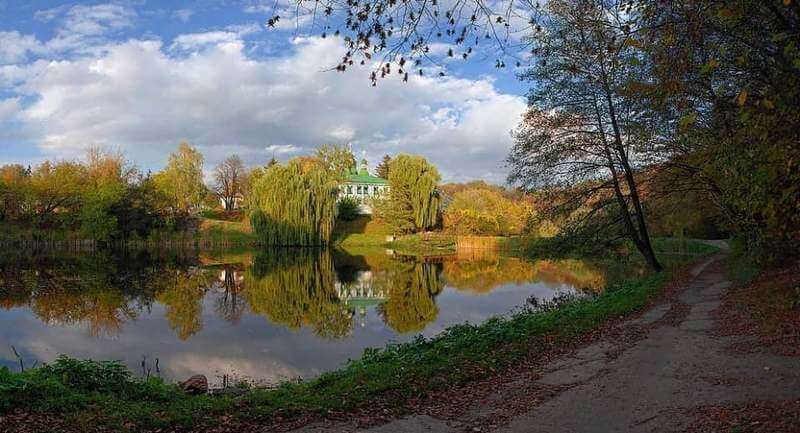 Kytaiv is a historical place, located in the Golosiivsky district of Kyiv, among the Dnipro hills, covered with forests and washed by lakes, creating a place for the peninsula. The history of Kytaiv begins from 1100, when the city-fortress of Peresechyn was built here. The name presumably comes from the Turkic word “kytai”, denoting a fortification or fortress. According to legend in the XII century here was the fortress-palace of Prince Bogolyubsky nicknamed “Kytai”.
Kytaiv is a historical place, located in the Golosiivsky district of Kyiv, among the Dnipro hills, covered with forests and washed by lakes, creating a place for the peninsula. The history of Kytaiv begins from 1100, when the city-fortress of Peresechyn was built here. The name presumably comes from the Turkic word “kytai”, denoting a fortification or fortress. According to legend in the XII century here was the fortress-palace of Prince Bogolyubsky nicknamed “Kytai”.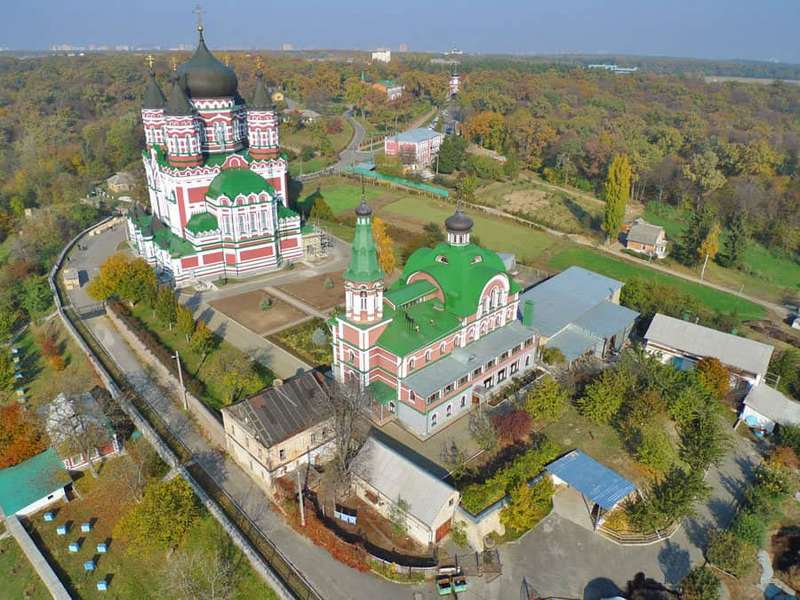 St. Panteleimon Monastery is a convent on the territory of Feofania current name is taken on behalf of the Chyhyryn bishop – Feofan, the abbot of the St. Michael’s Golden-Domed Monastery, who received a plot for the construction of a summer residence. The main temple of the nunnery was the St. Panteleimon Cathedral, built in the period of 1905-1912 on the territory of the male hermitage, which was attached to the St. Michael’s Golden-Domed Monastery.
St. Panteleimon Monastery is a convent on the territory of Feofania current name is taken on behalf of the Chyhyryn bishop – Feofan, the abbot of the St. Michael’s Golden-Domed Monastery, who received a plot for the construction of a summer residence. The main temple of the nunnery was the St. Panteleimon Cathedral, built in the period of 1905-1912 on the territory of the male hermitage, which was attached to the St. Michael’s Golden-Domed Monastery.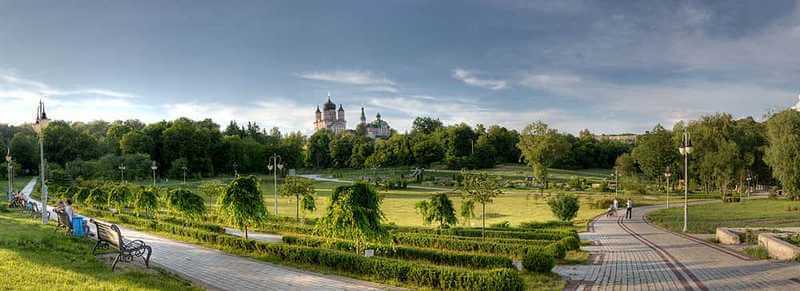 The Feofania (Theophany) park is one of the most beautiful parks in Kyiv. This historic area of the Golosiivsky district of the capital was first mentioned in 1471 as Lazarevshchyna, named after the monk-beekeeper Lazar. The modern name of the area exists from 1803 in honour of the abbot of the St. Michael’s Golden-Domed Monastery of the vicar Bishop Feofan, who received land in this area for a country cottage.
The Feofania (Theophany) park is one of the most beautiful parks in Kyiv. This historic area of the Golosiivsky district of the capital was first mentioned in 1471 as Lazarevshchyna, named after the monk-beekeeper Lazar. The modern name of the area exists from 1803 in honour of the abbot of the St. Michael’s Golden-Domed Monastery of the vicar Bishop Feofan, who received land in this area for a country cottage.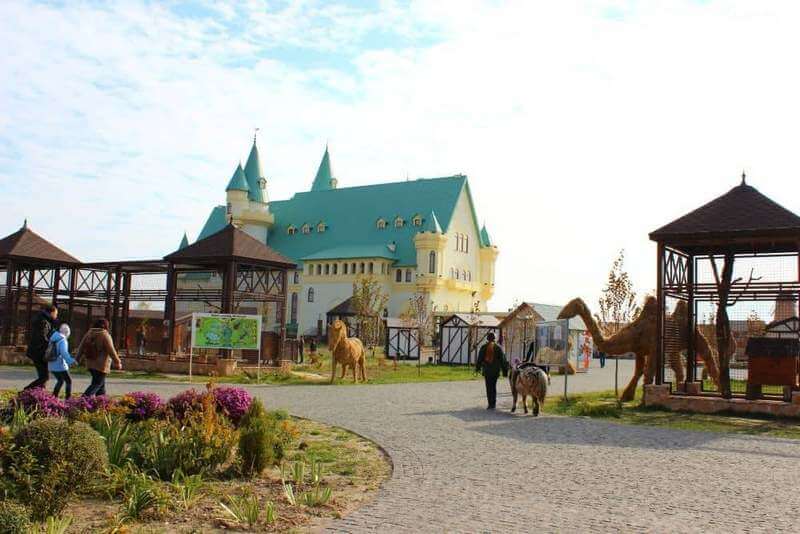 “12 months” Zoo – the first private zoo, opened in 2015 where one can not only feed, but also pet animals. It is located near Kyiv, in Demidov village. The main feature is special holes, through which everyone can feed an animal. There are several lakes on the territory of 16 hectares where black swans swim.
“12 months” Zoo – the first private zoo, opened in 2015 where one can not only feed, but also pet animals. It is located near Kyiv, in Demidov village. The main feature is special holes, through which everyone can feed an animal. There are several lakes on the territory of 16 hectares where black swans swim. Manufactura is the first outlet-town, opened in 2013 near Kyiv, in Khodoseevka village. A number of stock stores are designed in the European style of ancient cities. This format of the shopping center is popular in the US and Europe, where first local stores appeared more than a century ago near large textile mills, offering discounted goods to workers.
Manufactura is the first outlet-town, opened in 2013 near Kyiv, in Khodoseevka village. A number of stock stores are designed in the European style of ancient cities. This format of the shopping center is popular in the US and Europe, where first local stores appeared more than a century ago near large textile mills, offering discounted goods to workers.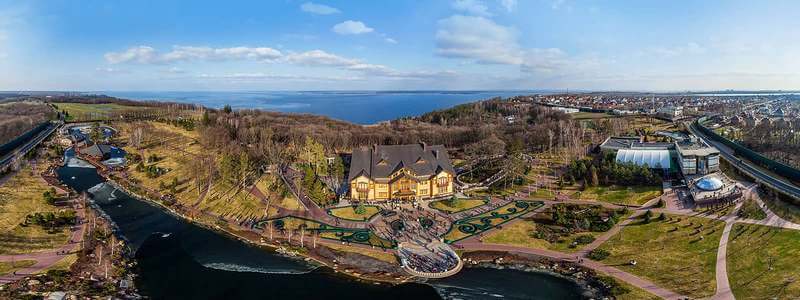 Mezhyhirya is a tract located in Novy Petrovtsy village near Kyiv and is known as the former residence of Viktor Yanukovich, occupied by him in 2002-2014. The Spaso-Preobrazhensky Mezhigirsky Monastery of the late 14th century was located on the territory until 1935. In 1935, the monastery was demolished for construction of the government suburban residence. A collection of hand-written books was found during the demolition, presumably from the lost library of Yaroslav the Wise.
Mezhyhirya is a tract located in Novy Petrovtsy village near Kyiv and is known as the former residence of Viktor Yanukovich, occupied by him in 2002-2014. The Spaso-Preobrazhensky Mezhigirsky Monastery of the late 14th century was located on the territory until 1935. In 1935, the monastery was demolished for construction of the government suburban residence. A collection of hand-written books was found during the demolition, presumably from the lost library of Yaroslav the Wise. The “Kyivan Rus” park – a grandiose scientific project designed to recreate the cultural and architectural image of the city of Volodymir or Kyiv’s Detinets in the V-XIII centuries in its historical size of 10 hectares, as well as the recreation of the atmosphere of Kyivan Rus. This project has no analogues in the world. There are entrance gates with watchtowers, the network of roads of Ancient Kyiv, manors of the 11th-12th centuries, commercial shops of artisans of the 11th-13th centuries, and the prince’s court with stands.
The “Kyivan Rus” park – a grandiose scientific project designed to recreate the cultural and architectural image of the city of Volodymir or Kyiv’s Detinets in the V-XIII centuries in its historical size of 10 hectares, as well as the recreation of the atmosphere of Kyivan Rus. This project has no analogues in the world. There are entrance gates with watchtowers, the network of roads of Ancient Kyiv, manors of the 11th-12th centuries, commercial shops of artisans of the 11th-13th centuries, and the prince’s court with stands. The open-air museum “Pyrogovo” is an ethnographic museum of folk architecture and mode of life, the largest in Ukraine. This is an architectural and landscape complex, founded in 1969, where the history of all ethnographic regions of Ukraine is collected. The dwellings of Poltavschyna, Prydniprovyie, Kyivschyna and Polissya can be seen there. The oldest house shown in museum belongs to the XVI century.
The open-air museum “Pyrogovo” is an ethnographic museum of folk architecture and mode of life, the largest in Ukraine. This is an architectural and landscape complex, founded in 1969, where the history of all ethnographic regions of Ukraine is collected. The dwellings of Poltavschyna, Prydniprovyie, Kyivschyna and Polissya can be seen there. The oldest house shown in museum belongs to the XVI century.